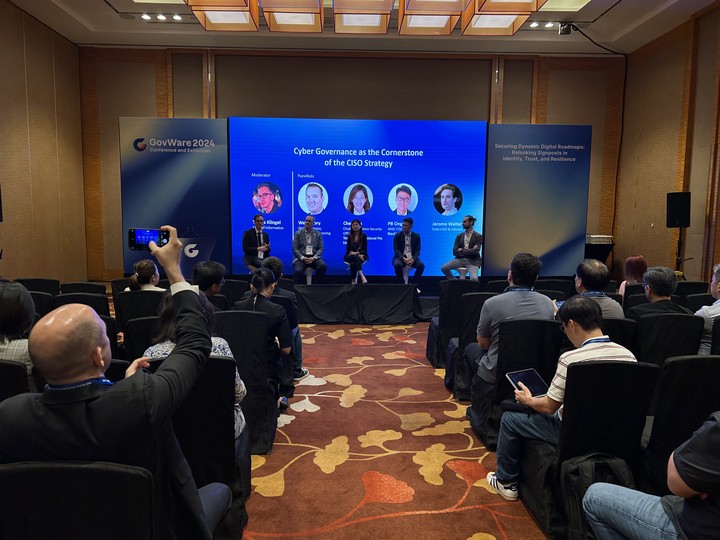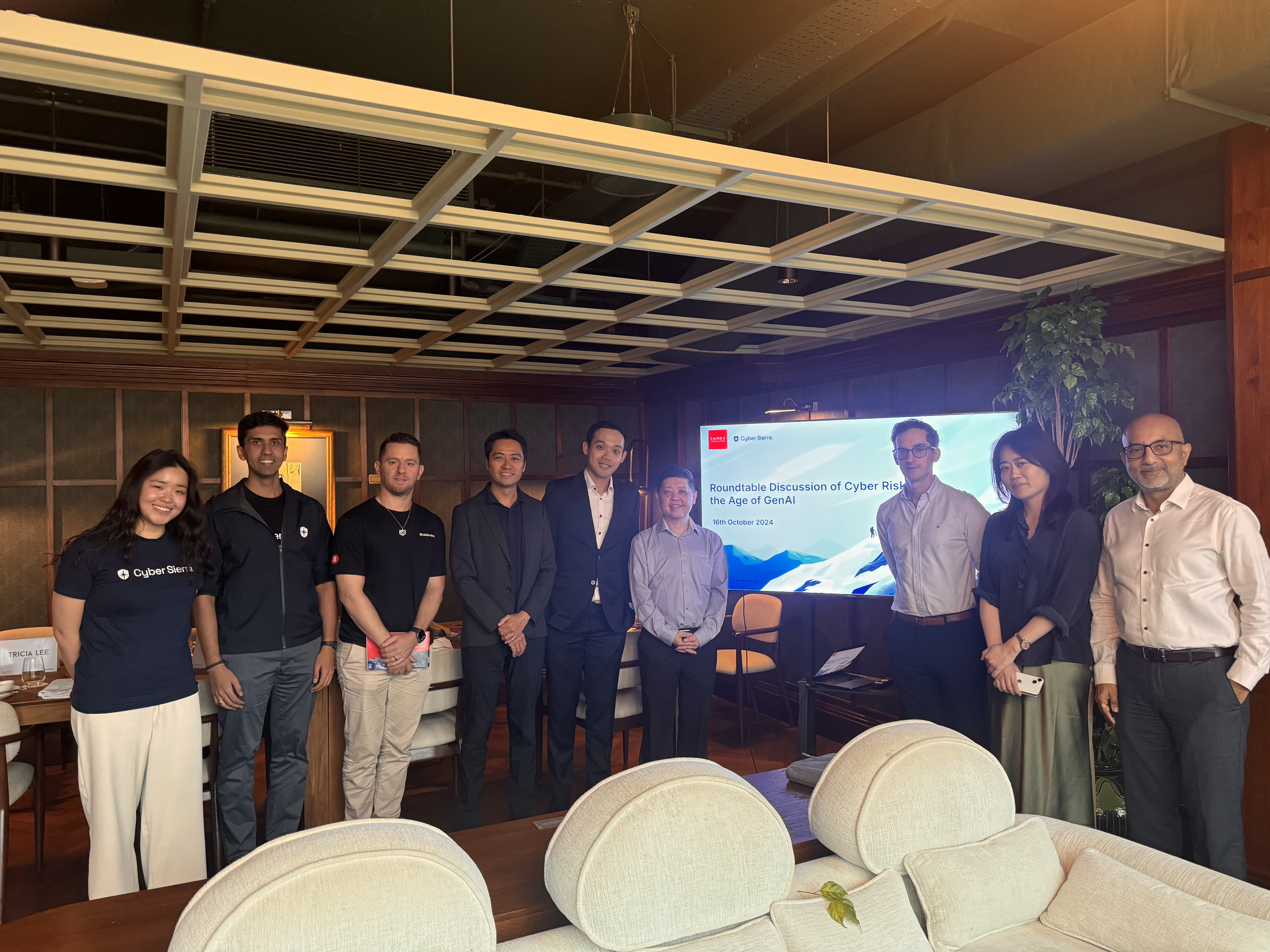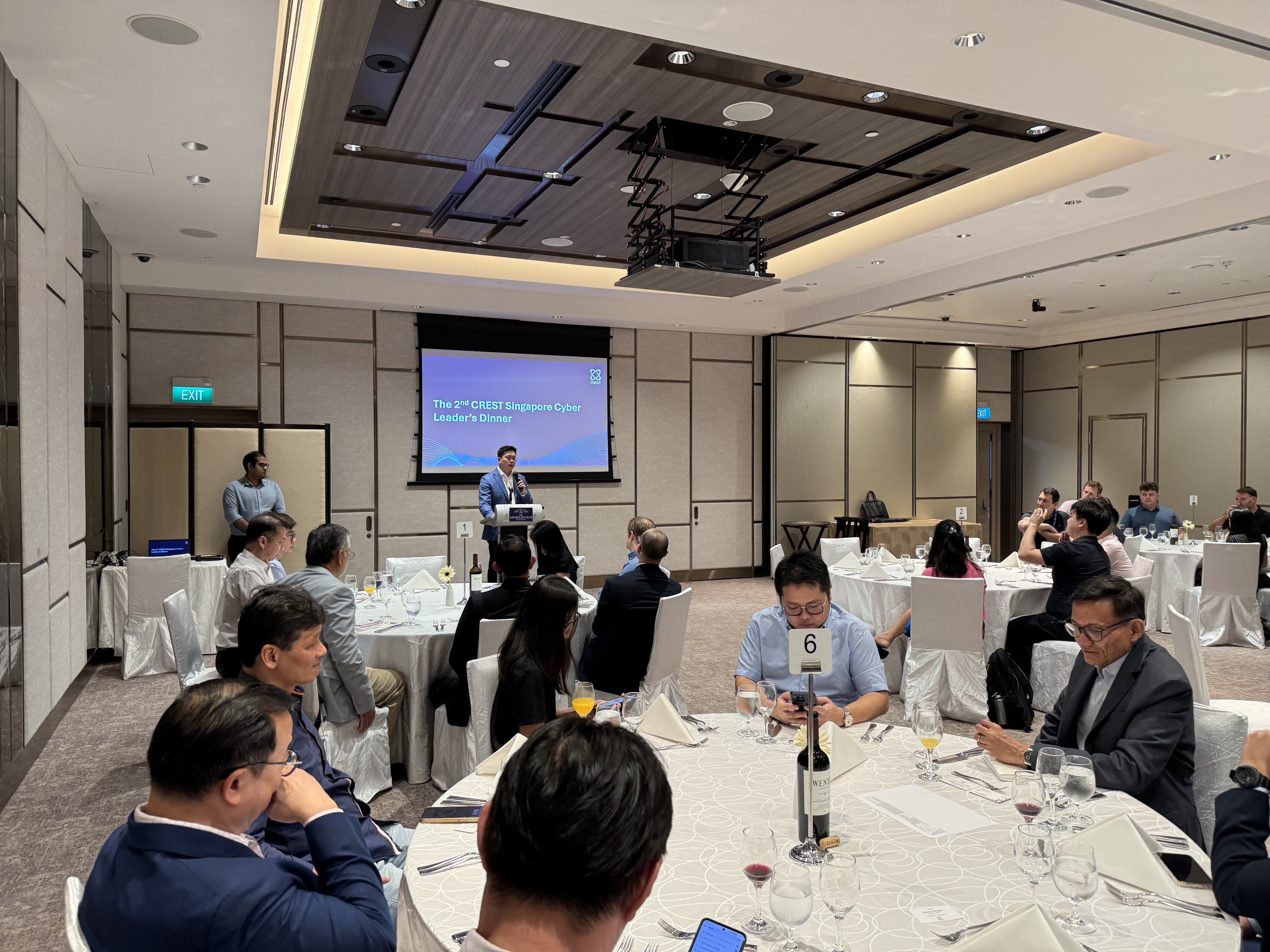Goveware 2024
 Conference
Conference
Key Insights from GovWare Panel Discussion at Singapore International Cyber Week
This week at GovWare and Singapore International Cyber Week was nothing short of transformative. It was a privilege to participate in a series of high-impact discussions that shed light on the evolving landscape of cybersecurity and risk management. In our panel on “Cyber Governance as the Cornerstone of the CISO Strategy,” we explored how strategic alignment, proactive communication, and a culture of shared responsibility can empower organizations to defend against ever-evolving cyber threats.
Diving Into the Agenda: Key Questions & Insights
Q1: Integrating Cybersecurity into Overall Business Risk Management
• How do CISOs ensure cybersecurity is part of the company’s risk strategy? Insight: It’s essential for CISOs to frame cybersecurity within the broader business context. By linking cyber risks directly to business objectives—such as growth, financial stability, and brand integrity—leaders can better appreciate the stakes. Assigning specific risks to senior managers helps foster a sense of accountability and ensures that cybersecurity becomes everyone’s responsibility.
• How can security be embedded at every stage of development? Insight: Embedding security from day one is critical. A DevSecOps approach—where development, operations, and security teams collaborate from the outset—ensures that security is not an afterthought. This approach, combined with consistent training and standardized security practices, creates a robust framework for safeguarding new products and systems.
Q2: Engaging the Board and Senior Leadership
• Keeping leadership informed: Insight: Boards and senior leaders are primarily concerned with the business impact of cyber risks. Communicating in clear, non-technical language—focusing on potential financial losses, brand damage, or compliance issues—ensures that cybersecurity remains on the agenda. Regular, concise updates and interactive workshops or simulations can bridge the gap between technical risks and business outcomes.
Q3: Managing Third-Party Risks
• Mitigating vendor-related threats: Insight: Effective third-party risk management begins long before a contract is signed. Conduct thorough assessments of vendors’ security practices, include stringent security requirements in contracts, and maintain continuous monitoring post-engagement. A proactive stance and a well-delineated incident response plan can significantly reduce vulnerabilities arising from external partnerships.
Q4: Prioritizing Cybersecurity Investments on a Budget
• Optimizing limited resources: Insight: When budget constraints exist, prioritization becomes key. Focus on the most critical risks and allocate resources accordingly. Automation of routine tasks, leveraging cost-effective open-source tools, and investing in employee training can create a solid defense without overspending.
• Utilizing frameworks and advanced technologies: Insight: Frameworks like Cyber Risk Quantification (CRQ) can help by putting a tangible value on risks, guiding more informed investment decisions. Meanwhile, AI and machine learning offer significant advantages, analyzing large datasets to predict and mitigate potential threats before they escalate.
• Essential security controls for financial services: Insight: A layered security approach is vital. This should include advanced threat detection powered by AI, strict adherence to regulatory requirements, comprehensive incident response plans, and rigorous third-party risk management. Continuous training to combat human error further fortifies these defenses.
Further Discussions
The conversation also ventured into other emerging and critical topics:
• Emerging Technologies & Events: Predictive analytics and anomaly detection are reshaping security strategies. We highlighted breakthrough events such as breakthroughs in quantum computing decryption, the rising use of deepfakes, and the evolving role of AI in global conflicts and productivity enhancement across industries.
• Geopolitics and Security Strategies: While our discussion only scratched the surface, it’s clear that shifting geopolitical dynamics continue to influence how organizations plan and respond to cyber threats.
• Over-Reliance on Third-Party Solutions: A pertinent question was raised regarding the risks of depending too heavily on external security solutions—a conversation sparked by lessons learned from companies like CrowdStrike. The consensus pointed to the need for balance: leveraging expert solutions while maintaining robust internal capabilities is crucial.
• Frameworks vs. Daily Operations: Finally, we explored whether an overemphasis on frameworks like ISO might limit a company’s ability to adapt to rapid technological changes. The dialogue suggested that while frameworks provide structure, they should complement, not replace, agile and responsive daily operational practices.
Key Takeaways
• Holistic Integration: Cybersecurity must be woven into the fabric of overall business risk management.
• Collaborative Culture: Cross-departmental collaboration and early-stage security integration (DevSecOps) are paramount.
• Business Impact Communication: Tailoring cyber risk updates to business impacts ensures engagement from senior leadership.
• Prioritization & Innovation: Efficient use of resources, combined with cutting-edge technology like AI and machine learning, is key to staying ahead in a tight budget environment.
• Dynamic Strategies: Adaptability in security practices—balancing structured frameworks with day-to-day responsiveness—remains a cornerstone of modern cybersecurity governance.
Conclusion
The insights shared during these sessions underscore a fundamental truth: Cyber governance isn’t just a technical mandate—it’s a strategic imperative that requires alignment, collaboration, and forward-thinking. As we continue to navigate the complexities of cyber risk in an era defined by rapid technological evolution and geopolitical shifts, these discussions serve as a vital reminder of the importance of a balanced, integrated approach to cybersecurity.
Stay tuned for more insights and discussions as we continue to explore and address the challenges of the digital age.
 |
 |
|---|
 |
|---|
 |
 |
|---|
 |
|---|
 |
 |
 |
|---|